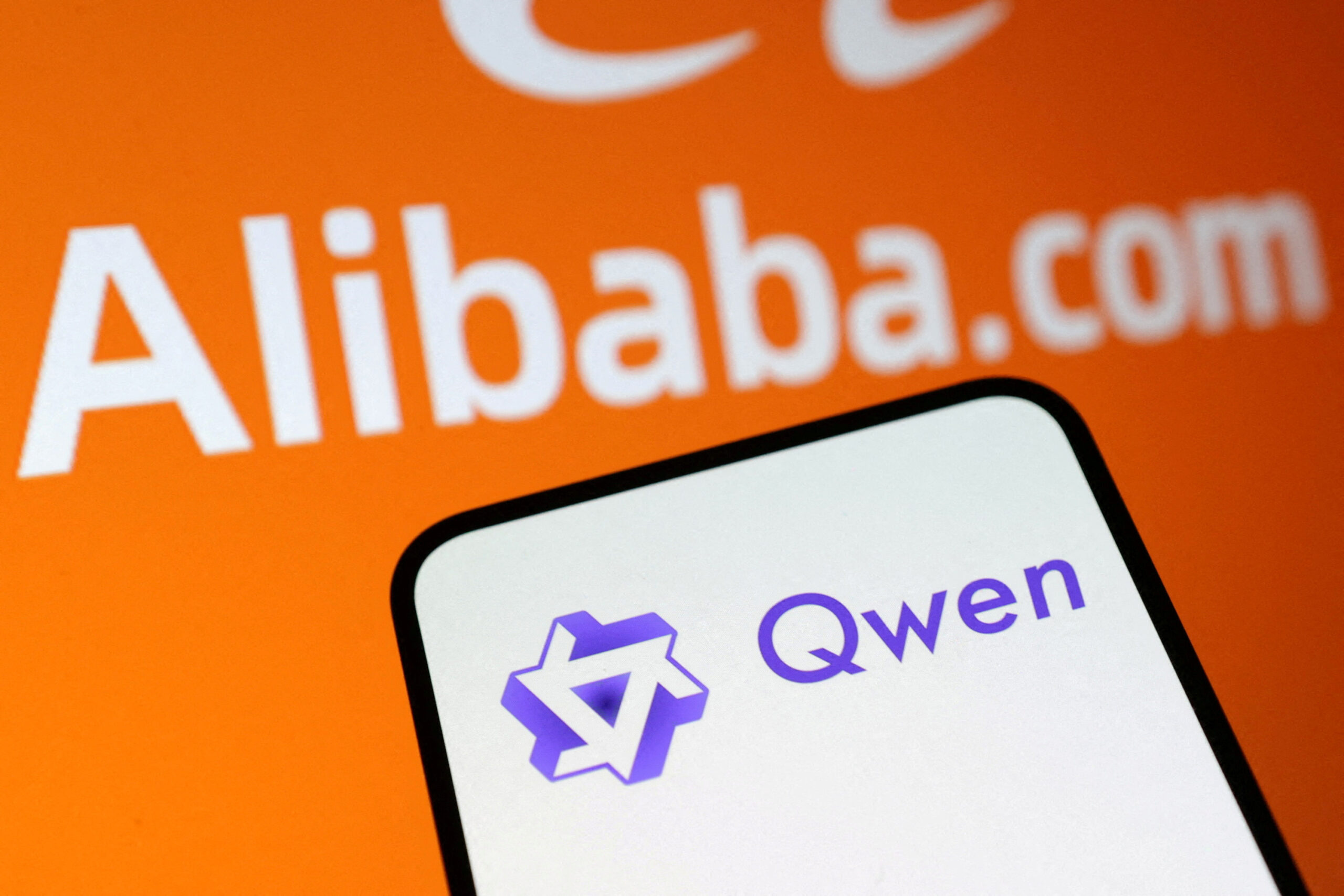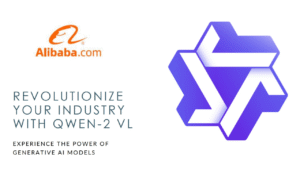Alibaba: Releasing the new Qwen model to improve AI transcription tools
Alibaba’s Qwen family has quietly — then not so quietly — become one of the most consequential entrants in the modern AI race. From large multimodal chat models to specialized audio and vision variants, Qwen’s evolution has been fast and strategic. The latest addition — a purpose-built automatic speech recognition (ASR) variant often referred to in announcements as Qwen3-ASR-Flash — signals Alibaba’s move to make speech-to-text not only more accurate, but faster, cheaper to run, and easier to integrate into real-world workflows. This article explains what the new Qwen model brings to AI transcription, why it matters to enterprises and creators, and what the larger market implications are. qwen.aiMarkTechPostAI News
What Alibaba released (short version)
Alibaba’s Qwen team has released a speech-focused model derived from the Qwen-3 family that the company describes as optimized for transcription: high accuracy, low latency, and robust performance across noisy conditions and multiple languages. Public write-ups call the model Qwen3-ASR-Flash (and related Qwen audio variants have been evolving since the Qwen 2.x era). Alibaba’s Qwen roadmap has included audio-specialized models before (e.g., Qwen2-Audio), and this release builds on that lineage with advances in scale, multi-modal pretraining, and engineering for production ASR. Alibaba Cloudqwen.ai
Why a specialized ASR model now?
Two industry trends make a targeted ASR release strategic:
-
Explosion of voice data and demand. More meetings, podcasts, voice assistants, video content and contact-center interactions need fast, reliable transcription. Text alone no longer suffices; firms want timestamps, speaker labels, domain-specific accuracy, and near real-time output.
-
Multimodal LLMs open new ASR possibilities. Models trained to handle text, audio, and vision together can use richer cross-modal signals to disambiguate speech in noisy or accented contexts. That allows ASR systems to do more than mapping waveform→tokens; they can leverage linguistic priors from language understanding models to improve transcription in low-resource settings or for specialized vocabulary. Qwen3-ASR-Flash leverages these multimodal advances, drawing strength from Qwen3-Omni’s capabilities. qwen.ai+1
What the model claims to improve
Based on the Qwen team’s write-ups and press coverage, the new Qwen ASR variant targets several pain points:
-
Lower word/character error rates in multilingual settings through large-scale, diverse training. Alibaba highlights gains over earlier models in several benchmarks. qwen.aiMarkTechPost
-
Robustness to noise and accents, thanks to training on tens of millions of hours (reports indicate very large voice datasets) and multimodal signals that help the model infer context. AI Newsqwen.ai
-
Faster inference / lower latency, enabling near-real-time transcription and live captions. The “Flash” moniker suggests optimizations for speed and deployment efficiency. qwen.ai
-
Broader language support — supporting many languages (announcements reference double-digit language support), which is critical for Alibaba’s global cloud customers and content platforms. GIGAZINEqwen.ai
-
Unified API & tooling so customers can manage transcription, diarization, and language-specific processing through a single interface rather than switching systems per language. Facebook
Technical highlights (what we can infer / know)
Alibaba hasn’t open-sourced every detail, but public material and patterns reveal important engineering choices:
-
Built on a multimodal foundation. Qwen3-ASR-Flash is reported to be built on Qwen3-Omni’s base, meaning its pretraining included text, audio, and perhaps visual data. Multimodal pretraining helps with context-aware transcription (e.g., using scene audio or subtitles). qwen.ai+1
-
Large, diverse speech corpus. Coverage across accented speakers, noise profiles, and domain-specific speech (medical, legal, customer support) improves out-of-the-box performance for many applications. Coverage of tens of millions of hours is mentioned in coverage of Qwen3 ASR releases. AI News
-
System-level optimizations. The “Flash” label and Alibaba Cloud’s enterprise positioning suggest quantization, pruning, and optimized inference kernels to support lower-cost, high-throughput deployments on both cloud GPUs and specialized inference hardware.
-
Hybrid capabilities — the model likely integrates classic ASR components (acoustic modelling, language modelling) with end-to-end transformer-based transduction, enabling a good tradeoff between accuracy and streaming performance.
Real-world uses — who benefits and how
-
Enterprises (contact centers, compliance, analytics)
Accurate, low-latency transcription is table stakes for automated quality monitoring, regulatory compliance, and building searchable archives of voice data. -
Media & creators
Podcasters, journalists, and video creators can get faster transcripts and captions with improved accuracy on names, technical terms, and code switches. -
Accessibility
Real-time captioning with low latency is crucial for accessibility in education, live events, and streaming platforms. -
Developer ecosystem & SaaS
By exposing a unified API and optimized model variants, Alibaba enables ISVs, speech analytics tools, and content platforms to embed transcription directly into apps without stitching multiple services. -
Local-language markets
For markets with many local languages/dialects, broader language support opens new customer segments — particularly relevant for Alibaba’s Asia-centric customer base. qwen.aiGIGAZINE
How Qwen ASR compares to other options
The ASR landscape is diverse: open and commercial models coexist.
-
Open-source ASR (like Whisper variants) offers easy access and community innovation, but can lag on enterprise features (low latency, production scalability, domain adaptation).
-
Cloud speech services (Google, AWS, Microsoft) provide mature pipelines and integrations; Alibaba’s Qwen ASR pushes a competitive edge in Asia and for customers already on Alibaba Cloud.
-
New Chinese startups (e.g., DeepSeek and others) have driven fierce competition on cost and performance; Alibaba’s Qwen releases are viewed as responses to maintain leadership. Reuters and industry outlets have documented the speed of Alibaba’s Qwen releases as part of a broader competitive surge. ReutersForbes
Unlike a generic cloud ASR announcement, Qwen3-ASR-Flash differentiates by being a model-first approach coming directly from a large-model team — which makes it easier to combine transcription with downstream LLM tasks (summarization, translation, intent detection) in a single pipeline.
Integration: from audio to insight
One of the most attractive promises is a smoother pipeline from raw audio to actionable output:
-
Transcribe (Qwen3-ASR-Flash) → 2. Speaker diarization & timestamps → 3. LLM-based summarization & key point extraction (Qwen family) → 4. Entity extraction, translation, and sentiment analysis.
Because the transcription model is part of the Qwen ecosystem, enterprises can reduce friction in building “speech → understanding → action” apps: e.g., immediately summarizing a meeting, flagging compliance risks, or generating searchable meeting notes with follow-up tasks. This vertical integration is exactly what many businesses want. qwen.ai+1
Costs, privacy, and compliance questions
New ASR capabilities raise important non-technical questions:
-
Privacy & data residency. Enterprises will ask whether audio data used for model improvement is retained and how Alibaba handles opt-in/opt-out. Enterprise contracts and regional regulations (e.g., data localization laws) will be decisive for adoption in regulated industries.
-
Fine-tuning vs. hosted models. Some customers prefer fine-tuning on proprietary voice data; others want managed models with guaranteed SLAs. Alibaba’s cloud productization will need to support both modes for wide adoption.
-
Bias and demographic performance. As with any speech model, performance can vary by accent, age, gender, and background noise. Independent audits and transparent benchmarks will be important for trust.
-
Security & adversarial risks. Voice spoofing and adversarial noise remain risks for downstream pipelines (e.g., voice-based authentication); robust detection and multi-factor design are necessary.
Because Qwen is being pushed aggressively into production settings, how Alibaba addresses these non-technical concerns will matter as much as raw accuracy numbers. Alibaba Cloud
Broader market implications
-
More competitive pricing & capabilities. With players like DeepSeek, OpenAI, and cloud incumbents pushing audio features, we may see more affordable, high-quality transcription options. Alibaba’s model adds pressure on pricing and feature parity.
-
Faster LLM + audio product innovation. When transcription quality improves, product teams can build richer audio-first experiences: live multilingual meetings, on-the-fly voice agents, and intelligent captioning.
-
Geopolitical & regional competition. China-based AI stacks (Alibaba, ByteDance, Huawei) are racing with Western players; high-quality ASR that supports many local languages will be a competitive lever for local and regional market share. Reuters and other outlets have tracked this intensifying competition in earlier Qwen releases. ReutersCinco Días
What to watch next
-
Independent benchmark results. Public, reproducible benchmarks (WER/CER on standard datasets, noisy-condition tests) will show whether the model’s claims hold across domains.
-
Pricing & deployment choices. Will Alibaba offer self-hosted, fine-tunable variants or only managed cloud endpoints? Pricing tiers and latency guarantees will shape adoption.
-
Privacy controls. Clear documentation of data retention, model improvement opt-outs, and regionally compliant deployments will increase enterprise confidence.
-
Ecosystem tools. Notebook examples, SDKs, and prebuilt connectors (for call centers, CRMs, podcast platforms) will determine the speed of real-world adoption.
Bottom line
Alibaba’s Qwen3-ASR-Flash (and the broader Qwen audio family) is not simply another incremental ASR model. It’s part of a strategic bet: embed speech recognition tightly into a broader multimodal LLM ecosystem so that voice becomes a first-class input and output for downstream intelligence. If the model delivers on lower error rates, faster inference, and easy integration, it will make transcription more powerful and more accessible — accelerating new products and workflows that convert spoken conversations into actionable, searchable knowledge.
That said, real-world adoption will hinge on pricing, privacy safeguards, transparent benchmarking, and Alibaba’s ability to provide enterprise-friendly tooling. Expect competitors to respond quickly; the ASR space is already heating up, and better transcription models will be a core battleground for the next wave of voice-enabled AI applications. qwen.aiMarkTechPostAlibaba Cloud
Sources & further reading
-
Alibaba Qwen team blog: Qwen3-ASR announcement and technical overview. qwen.ai
-
MarkTechPost coverage: Alibaba Qwen team releases Qwen3-ASR. MarkTechPost
-
Industry article: “Alibaba’s new Qwen model to supercharge AI transcription tools.” AI News
-
Alibaba Cloud press & Qwen family background (Qwen2.5/Qwen2-Audio context). Alibaba Cloud+1
-
Reuters reporting on Alibaba’s Qwen releases and competitive context. Reuters
https://bitsofall.com/https-yourblog-com-increased-investment-in-ai-companies-mistral-ai-databricks/
https://bitsofall.com/https-yourwebsite-com-ai-data-center-water-consumption/
Switzerland’s open AI model — a new chapter in transparent, public-interest AI
AI and Job Losses: Navigating the Shifting Landscape of Work







